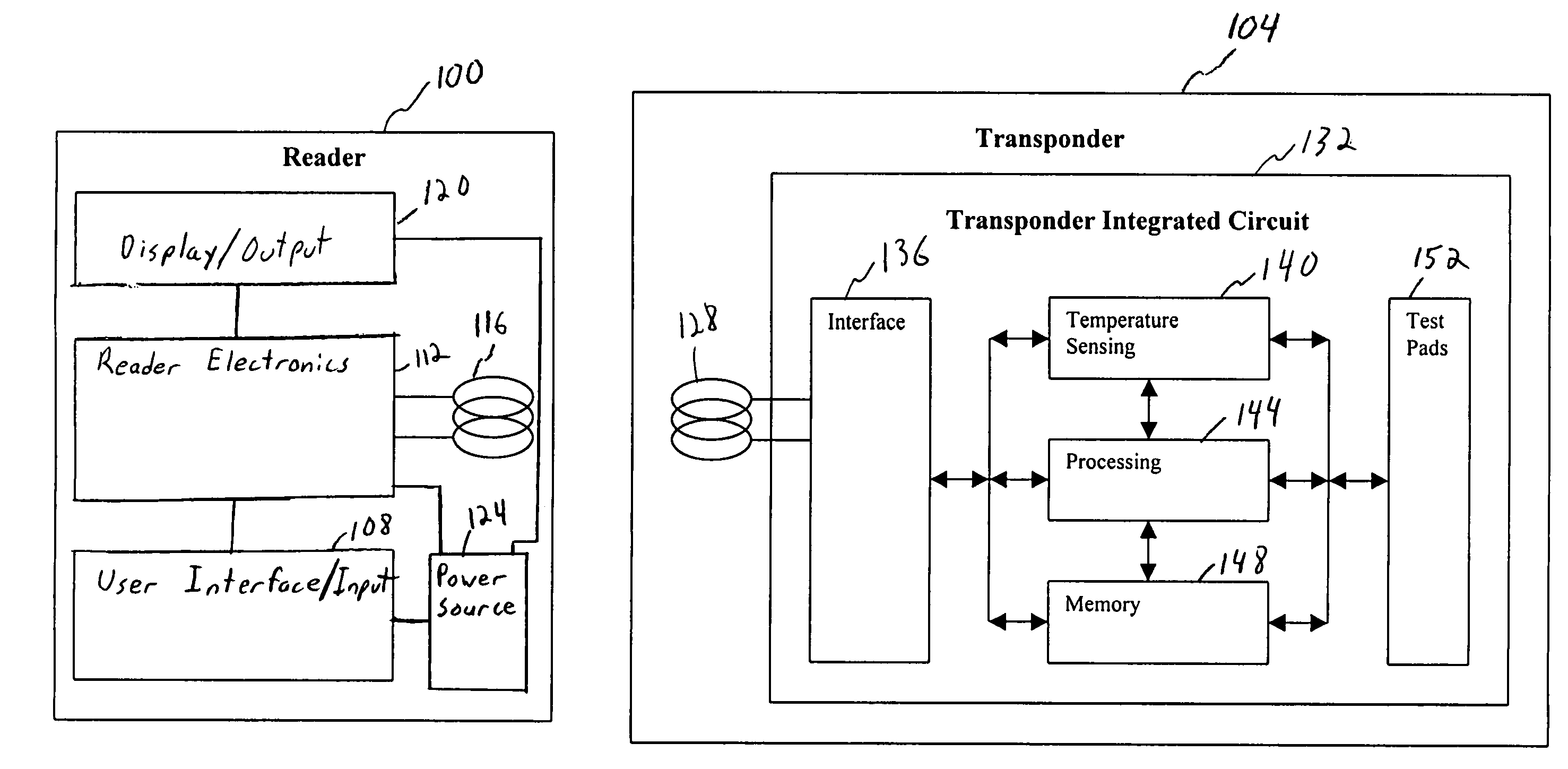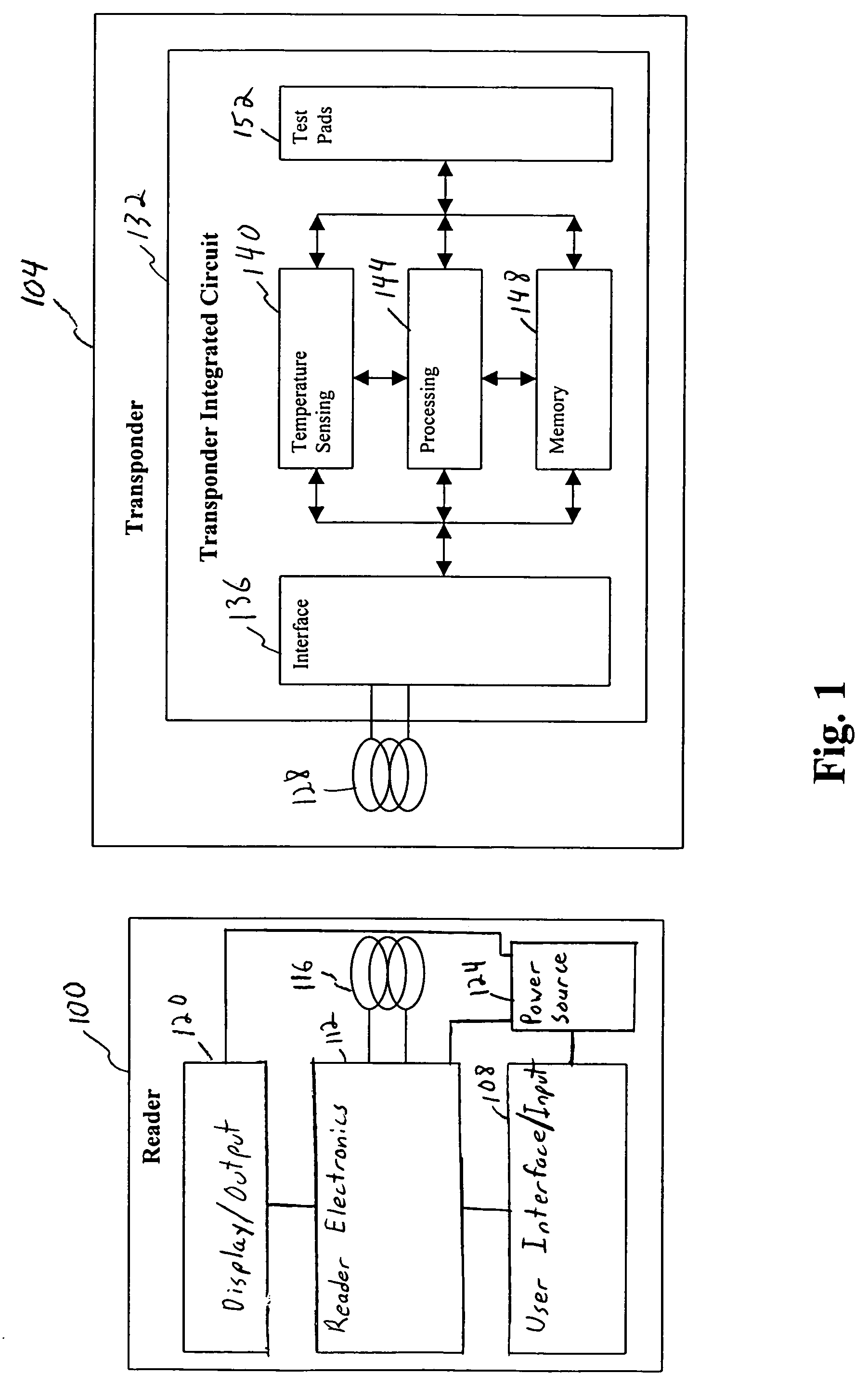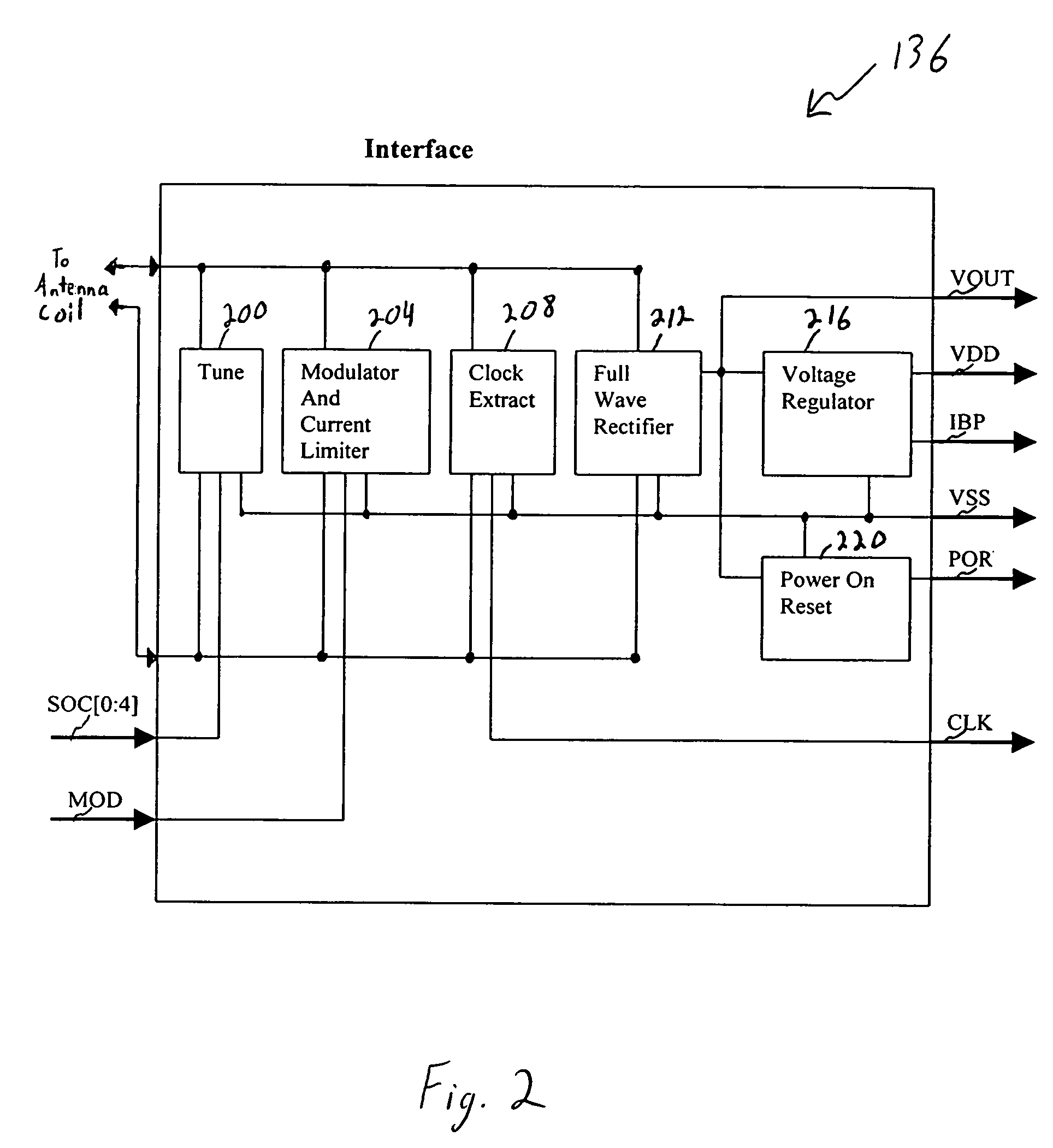Method and apparatus for sensing and transmitting a body characteristic of a host
a technology of host characteristics and sensing methods, applied in the field of implantable radio frequency identification systems, can solve the problems of significant time and resources, increased power consumption of temperature sensors, and significant increase in transponder power consumption
- Summary
- Abstract
- Description
- Claims
- Application Information
AI Technical Summary
Benefits of technology
Problems solved by technology
Method used
Image
Examples
Embodiment Construction
[0036]While this invention is susceptible of embodiments in many different forms, there are shown in the drawings and will herein be described in detail, preferred embodiments of the invention with the understanding that the present disclosure is to be considered as an exemplification of the principles of the invention and is not intended to limit the broad aspects of the invention to the embodiments illustrated.
[0037]Referring to FIG. 1, a block diagram representation of a transponder system including a reader 100 and temperature sensing transponder 104 of one embodiment of the present invention is illustrated. The reader 100 is similar to traditional readers associated with passive transponder devices, and includes a user interface / input 108, reader electronics 112, a reader antenna 116, a display / output 120, and a power source 124. The reader 100 is operable to transmit and receive information over the reader antenna 116. Instead of a single antenna 116, the reader could have sep...
PUM
| Property | Measurement | Unit |
|---|---|---|
| carrier frequency | aaaaa | aaaaa |
| capacitances | aaaaa | aaaaa |
| capacitances | aaaaa | aaaaa |
Abstract
Description
Claims
Application Information
 Login to View More
Login to View More - R&D
- Intellectual Property
- Life Sciences
- Materials
- Tech Scout
- Unparalleled Data Quality
- Higher Quality Content
- 60% Fewer Hallucinations
Browse by: Latest US Patents, China's latest patents, Technical Efficacy Thesaurus, Application Domain, Technology Topic, Popular Technical Reports.
© 2025 PatSnap. All rights reserved.Legal|Privacy policy|Modern Slavery Act Transparency Statement|Sitemap|About US| Contact US: help@patsnap.com



